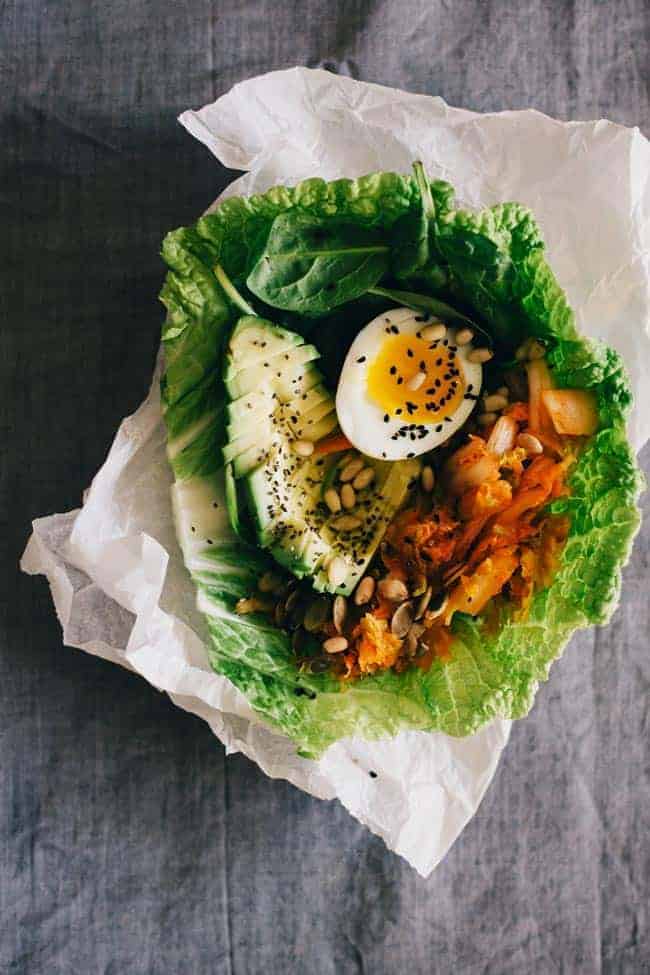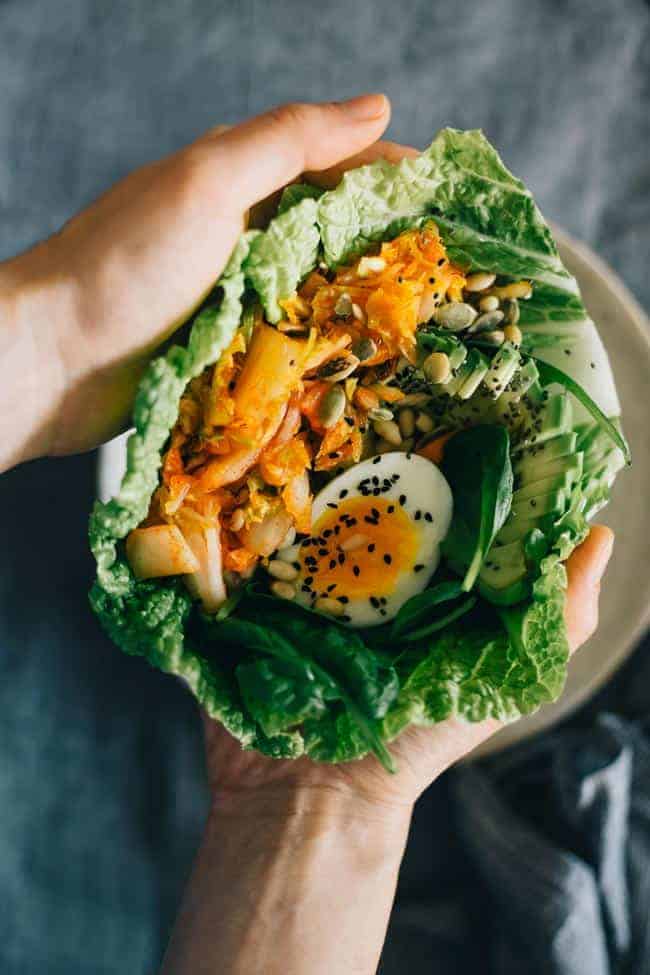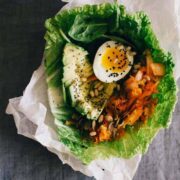Fact: Fermenting foods is the oldest way to preserve the nutritional properties of raw vegetables during wintertime. Fermentation is caused by good bacteria, which refreshes the colonies in our colon and improves our overall health by boosting our immune system. I know it might sound a little weird, but ingesting bacteria from fermented foods is actually a very beneficial thing for us.
 Fermented foods are widely available, and you don’t even question the bacteria when drinking wine (fermented grapes) and eating tofu (fermented soy) or yogurt (fermented milk). I grew up with the pickled cucumbers and red cabbage sauerkraut my nanny used to prepare in late autumn. We ate these plant-based probiotics all winter when fresh nutrients from fruits and vegetables were lacking from our diet.
Fermented foods are widely available, and you don’t even question the bacteria when drinking wine (fermented grapes) and eating tofu (fermented soy) or yogurt (fermented milk). I grew up with the pickled cucumbers and red cabbage sauerkraut my nanny used to prepare in late autumn. We ate these plant-based probiotics all winter when fresh nutrients from fruits and vegetables were lacking from our diet.
Why we need fermented foods
It’s kind of magical how veggies turn into something completely different taste and flavor-wise, while still preserving their nourishing nutrients. And the magic is actually a very simple process. When the natural sugars in vegetables feed the bacteria they turn into lactic acid, which gives the pungent smell and sour taste while acting as a natural preservative. The good bacteria in our digestive system is actually the probiotics everyone is talking about, and we need a diverse array of them to support overall health.

How to make kimchi wrap recipe
While red cabbage sauerkraut is my favorite fermented food, I recently tried making kimchi and discovered a whole new world of fermented flavors. Kimchi is the national Korean dish, and it sure deserves this role – it has an incredibly rich taste! Its spicy, intense flavor makes it perfect to eat on its own as a salad or you can combine it with less-flavored foods, like I did in this lunch wrap.
Kimchi Lunch Wrap
Ingredients
For the kimchi
- 1 Napa cabbage
- 2 inch ginger piece peeled and minced
- 1 tsp good quality sea salt
- 1 tsp red chilli flakes
- 2 garlic cloves minced
For the wrap
- 2 crispy Napa cabbage leaves rinsed an drained, you can also use cabbage or lettuce leaves
- 1 free range egg softly boiled and cut into halves
- 1 handful fresh spinach
- 1/2 cup kimchi
- 1 ripe avocado peeled and cut into thin slices
- Black sesame seeds chia and pumpkin seeds to garnish
Instructions
- In a stone mortar add the minced ginger, garlic and chili flakes and mix with a pestle to obtain a red paste.
- Rinse the nappa cabbage leaves and drain well, then roughly chop them and add into a large bowl.
- Add the salt then use your hands to massage them until they softened and released their juices.
- Add the red paste and massage for a couple of minutes, to coat evenly.
- Transfer the mixture into a very clean large airtight jar, press well to release trapped air bubbles. The juices should cover the whole mixture, while there should still be at least two inches free at the top of the jar for the carbon dioxide.
- Lid the jar and leave in the counter at room temperature for two or three days. Check it every once and again until you obtain the desired flavor and sour taste.
- To assemble the wraps, lay a crispy leaf on your plate, and fill it with kimchi, an egg half, some fresh spinach leaves and avocado slices, garnish with mixed seeds, then proceed the same with the other cabbage leaf.
- Serve right away, or pack for later.
Notes
6


Leave a Reply